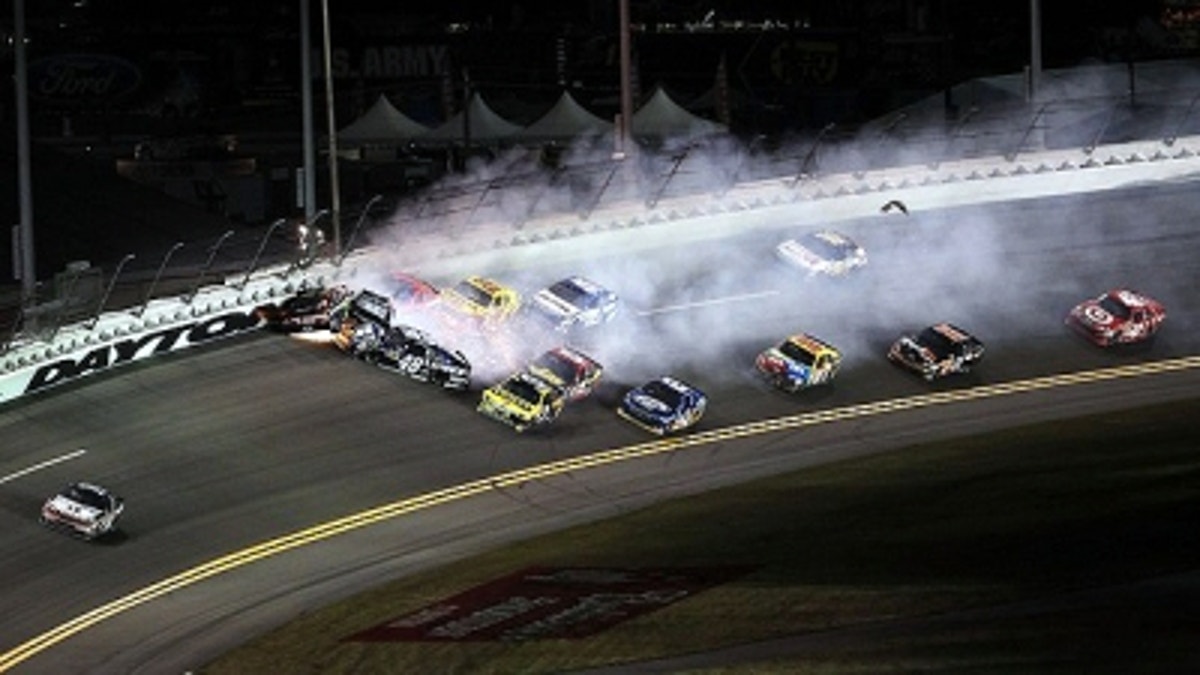
It was Saturday Night Alive.
Last week’s Budweiser Shootout at Daytona International Speedway held a special sort of madness. Cars were unstable in the new form of pack racing that NASCAR’s rules changers have created, and among the results was a spate of major incidents.
The worst occurred near the end of the race when contact between the frontrunners sent four-time champion Jeff Gordon into a wild, flipping ride. By the time the race finally ended in overtime, the garage area was filled with an ugly group of smashed race cars.
But, almost to a man, the drivers climbed from their cars and talked about how great it all was – at least in comparison to the tandem-drafting scenarios.
But…does the madness continue in the Daytona 500, a much longer, much more important race?
Probably not. Or at least not at the same level.
“Everybody, no matter what their outcome was tonight, learned something they're going to take into the qualifying races and we'll take into Sunday,” said Tony Stewart after being outrun by Kyle Busch on the Shootout’s last lap.
“You can always push harder in this race than the 500 because we always run this at night, and it's a lot cooler. We'll have most likely a lot warmer conditions [Sunday]. That will eliminate some of the stuff that guys were really trying to push the envelope on.”
Drivers tend to adopt a more conservative approach in the 500, and that will likely be underlined this year because of uncertainty about how the return of pack drafting will impact the race over the long afternoon.
“The Daytona 500 is the biggest race of anyone’s career,” said Greg Biffle, who qualified in the No. 2 position Sunday. “It’s a long race, a lot happens, you have to miss the big wreck and you’ve got to be there at the end.
“We don’t know how long we’ll be able to push, and it’s all about track position in the last few laps. We learned a lot from the Shootout, and the fact we were able to qualify on the outside row for the Daytona 500 is a testament to how hard my team has worked in the off season getting ready for this weekend.”
Engine temperatures could be a big issue in the 500. Several drivers reported temperatures approaching the critical 300-degree mark in the Shootout because of close drafting.
“The rules package makes the car a lot looser than what we have seen in the past, on top of the fact that you have to be very smart with keeping your car cool,” Jimmie Johnson said. “We are dealing with a ton of issues. I think temperatures are going to be a big issue come Sunday. I’m not sure if NASCAR will consider looking at it, but we could overheat some cars Sunday afternoon.”
Matt Puccia, Biffle’s crew chief, said being in good shape in the final 50 laps is a key.
“Survival is the biggest thing,” he said. “You’ve got to be there at the end to be in position to win. Coming off the Shootout, I feel like our team is working well together, and I’m ready to see how the new fuel injection system plays into a full race. It should be interesting and may shake up how pit strategy has worked in the past.”
Mike Hembree is NASCAR Editor for SPEED.com and has been covering motorsports for 30 years. He is a six-time winner of the National Motorsports Press Association Writer of the Year Award.
